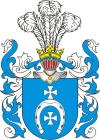ใครออกเดทกับ Stanisław August Poniatowski?
Izabela Czartoryska วันที่ Stanisław August Poniatowski จาก ? ถึง ?. ช่องว่างอายุ 14 ปี 1 เดือน 14 วัน.
จักรพรรดินีเยกาเจรีนาที่ 2 แห่งรัสเซีย วันที่ Stanisław August Poniatowski จาก ? ถึง ?. ช่องว่างอายุ 2 ปี 8 เดือน 15 วัน.
Magdalena Agnieszka Sapieżyna วันที่ Stanisław August Poniatowski จาก ? ถึง ?.
Elżbieta Szydłowska วันที่ Stanisław August Poniatowski จาก ? ถึง ?.
Stanisław August Poniatowski

Stanisław II August (born Stanisław Antoni Poniatowski; 17 January 1732 – 12 February 1798), known also by his regnal Latin name Stanislaus II Augustus, and as Stanisław August Poniatowski (Lithuanian: Stanislovas Augustas Poniatovskis), was King of Poland and Grand Duke of Lithuania from 1764 to 1795, and the last monarch of the Polish–Lithuanian Commonwealth.
Born into wealthy Polish aristocracy, Poniatowski arrived as a diplomat at the Russian imperial court in Saint Petersburg in 1755 at the age of 22 and became intimately involved with the future empress Catherine the Great. With her aid, he was elected King of Poland and Grand Duke of Lithuania by the Sejm in September 1764 following the death of Augustus III. Contrary to expectations, Poniatowski attempted to reform and strengthen the large but ailing Commonwealth. His efforts were met with external opposition from neighbouring Prussia, Russia and Austria, all committed to keeping the Commonwealth weak. From within he was opposed by conservative interests, which saw the reforms as a threat to their traditional liberties and privileges granted centuries earlier.
The defining crisis of his early reign was the War of the Bar Confederation (1768–1772) that led to the First Partition of Poland (1772). The later part of his reign saw reforms wrought by the Diet (1788–1792) and the Constitution of 3 May 1791. These reforms were overthrown by the 1792 Targowica Confederation and by the Polish–Russian War of 1792, leading directly to the Second Partition of Poland (1793), the Kościuszko Uprising (1794) and the final and Third Partition of Poland (1795), marking the end of the Commonwealth. Stripped of all meaningful power, Poniatowski abdicated in November 1795 and spent the last years of his life as a captive in Saint Petersburg's Marble Palace.
A controversial figure in Poland's history, he is viewed with ambivalence as a brave and skillful statesman by some and as an overly hesitant coward by others, and even as a traitor. He is criticized primarily for his failure to resolutely stand against opposing forces and prevent the partitions, which led to the destruction of the Polish state. On the other hand, he is remembered as a great patron of arts and sciences who laid the foundation for the Commission of National Education, the first institution of its kind in the world, the Great Sejm of 1788–1792, which led to the Constitution of 3 May 1791 and as a sponsor of many architectural landmarks. Historians tend to agree that, taking the circumstances into account, he was a skillful statesman, pointing out that passing the Constitution was a sign of bravery, although his unwillingness to organize a proper nationwide uprising afterward is seen as cowardice and the key reason for the Second Partition and the subsequent downfall of Poland.
อ่านเพิ่มเติม...Izabela Czartoryska

Fürstin (Księżniczka) Izabela Dorota Fortunata Czartoryska geb. Gräfin von Flemming (auch Isabella; * 31. März 1745 in Warschau; † 17. Juni 1835 in Wysock) war eine aristokratische Schriftstellerin, Philanthropin, Mäzenin, Salonnière und Kunstsammlerin und begründete die Sammlungen des späteren Czartoryski-Museums, des ersten polnischen Nationalmuseums. Sie engagierte sich als Patriotin im Unabhängigkeitsstreben Polens gegenüber Russland und ging nach dem gescheiterten Novemberaufstand von 1830 mit ihrer Familie ins Exil.
อ่านเพิ่มเติม...Stanisław August Poniatowski

จักรพรรดินีเยกาเจรีนาที่ 2 แห่งรัสเซีย

Catherine II (en russe : Екатерина II) ou Catherine la Grande (Екатери́на Вели́кая), née Sophie Frédérique Augusta d'Anhalt-Zerbst le 2 mai 1729 à Stettin en Poméranie (aujourd'hui Szczecin en Pologne) et morte le 17 novembre 1796 à Saint-Pétersbourg, est l'épouse du prince puis empereur Pierre III (1728-1762). Elle devient impératrice régnante de Russie en 1762 jusqu'à sa mort, à la suite d'un coup d'État le 9 juillet 1762, suivi de l'incarcération de Pierre III, puis de son exécution le 17 juillet par un proche de Catherine.
Prénommée Catherine lors de son baptême orthodoxe, nécessaire avant son mariage avec le prince Pierre, elle devient impératrice consort après l'avènement de celui-ci (5 janvier 1762). Après son coup d'État, elle se fait proclamer « impératrice et autocrate de toutes les Russies ».
Elle règne personnellement sur l'Empire russe du 9 juillet 1762 à sa mort le 17 novembre 1796. Sous son règne, la Russie connaît une grande expansion territoriale vers l'ouest et le sud (plus de 500 000 km2), notamment à l'occasion des trois partages de la Pologne (1772, 1793 et 1795) et de guerres victorieuses contre l'Empire ottoman.
อ่านเพิ่มเติม...Stanisław August Poniatowski

Magdalena Agnieszka Sapieżyna

Stanisław August Poniatowski

Elżbieta Szydłowska

Elżbieta Szydłowska, married surname Grabowska (1748 – 1 June 1810), was a member of the Polish nobility, a mistress and possibly the morganatic wife of the last King of Poland, Stanisław August Poniatowski.
อ่านเพิ่มเติม...